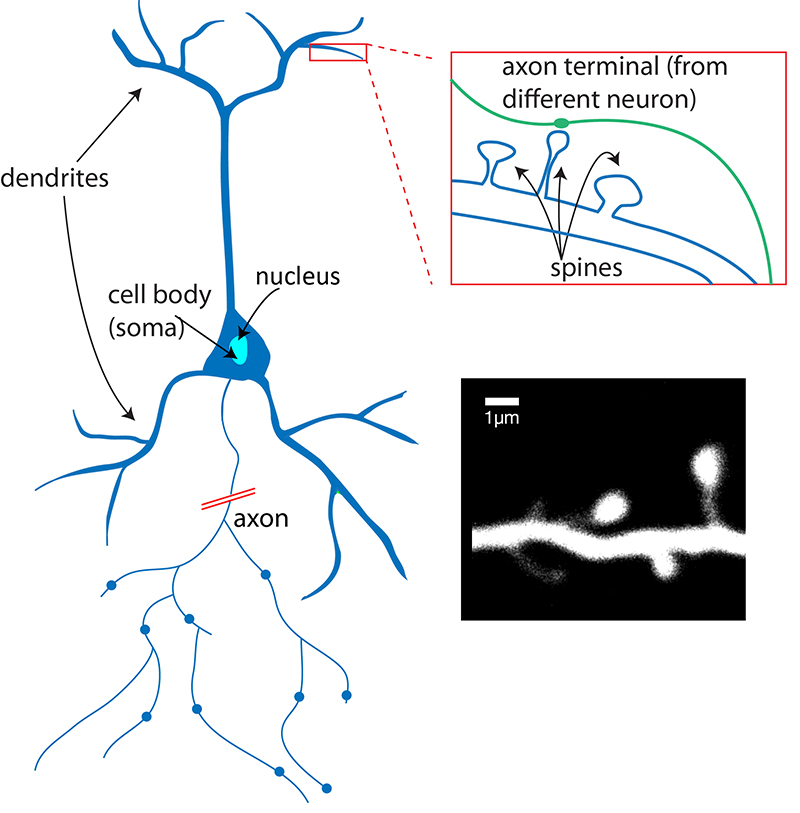

The pathologist Miguel Marin-Padilla, in advocating that structural abnormalities in the brain are associated with mental retardation, found that the cerebral cortices of individuals with Down’s syndrome contained underdeveloped neurons with fewer dendrites and deformed dendritic spines. During development and learning, the number of spines increases, and then decreases with ageing. One important feature of dendrites is that the shape of their tree-like structure differs between varieties of neurons, which allows neurons to be classified. Multipolar neurons are the most common type of neuron. An example of a bipolar neuron is a retinal bipolar cell, which receives signals from photoreceptor cells that are sensitive to light and transmits these signals to ganglion cells that carry the signal to the brain. Some dendrites have spines (small fibers and bumps) on their surface, which serve to greatly increase the surface area of a neuron (see figure below). A bipolar neuron has one axon and one dendrite extending from the soma. Elsewhere, some dendrites can also act like axon terminals, releasing neurotransmitters in response to impulses and local voltage changes. At least in cerebral cortex, dendrites are the receiving branches of the neuron and the axon is the sending branch.
#Structure a neuron dendrite plus#
Pyramidal neurons have a tall-tree-like apical dendrite plus some root-like basal dendrites.

It receives synapses from the axon terminals of neurons, but unlike a neuron it is not myelinated. Derived from the Greek word dendron meaning ‘tree’, in biology, it is a branch-like nerve cell process collecting incoming or afferent information in the form of electrical signals.


 0 kommentar(er)
0 kommentar(er)
